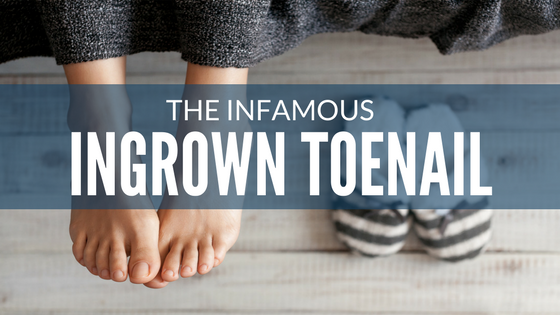Ingrown toenails. The infamous cause of toe pain for many individuals! The culprit behind it all (pain, swelling, redness, infection) is the nail itself!
What is it?
It is when your toenail grows into your skin, usually an area that we refer to as the lateral sulcus or lateral nail fold (Image bellow). This area becomes red, hot and swollen due to infection and irritation in the area.
What is it?
It is when your toenail grows into your skin, usually an area that we refer to as the lateral sulcus or lateral nail fold (Image bellow). This area becomes red, hot and swollen due to infection and irritation in the area.
How does it happen?
An ingrown toenail is initiated when the nail grows into the skin and creates an opening. This becomes a wound prone to infection and immense amounts of pain as the nail pushes into the wound. This gets worse as the area becomes more and more inflamed (red/hot/swollen), resulting in a build up of pressure (due to a lack of space in the area). Unfortunately, we witness patients put up with the pain for far too long (more than a year in some cases).
Who gets it?
Anyone can unfortunately experience an ingrown toenail. However, the main contributing factors to an ingrown toenail are:
What can you do about it?
Antibiotics are effective in dealing with the infection but it wont remove the nail thats caused the issue in the first place. We encourage antibiotics if there is an active infection (so long as the course is completely finished), however we discourage treatment with antibiotics alone. Ingrown toenails are a common issue we see at Your Podiatry Room. An initial assessment of your nails is completely necessary to examine the cause of your ingrowing nail(s), this way we can treat it accordingly.
If you have any enquiries or would like to know more about what can be done to treat your ingrown toenail(s), you can contact us or simply make a booking online.
An ingrown toenail is initiated when the nail grows into the skin and creates an opening. This becomes a wound prone to infection and immense amounts of pain as the nail pushes into the wound. This gets worse as the area becomes more and more inflamed (red/hot/swollen), resulting in a build up of pressure (due to a lack of space in the area). Unfortunately, we witness patients put up with the pain for far too long (more than a year in some cases).
Who gets it?
Anyone can unfortunately experience an ingrown toenail. However, the main contributing factors to an ingrown toenail are:
- Incorrect cutting technique: We see this quite often when a piece of nail (spicule) is left on deep side of the nail. As the nail grows, this sharp spicule pierces the skin and creates an opening in the skin.
- Nail trauma: You might have dropped something a long time ago on your toe or bumped it into a bench. This can damage the nail matrix (when the nail grows from) and alter the shape of your nail. Due to its deformed shape it has the tendency to grow into your skin.
- Hereditary: This one is the one you can thank your parents for. Nails can naturally grow thickened, involuted (curled into your skin) or deformed, simply because of your genes. This can contribute to the initial stages of an ingrown toenail.
What can you do about it?
Antibiotics are effective in dealing with the infection but it wont remove the nail thats caused the issue in the first place. We encourage antibiotics if there is an active infection (so long as the course is completely finished), however we discourage treatment with antibiotics alone. Ingrown toenails are a common issue we see at Your Podiatry Room. An initial assessment of your nails is completely necessary to examine the cause of your ingrowing nail(s), this way we can treat it accordingly.
If you have any enquiries or would like to know more about what can be done to treat your ingrown toenail(s), you can contact us or simply make a booking online.




 RSS Feed
RSS Feed
